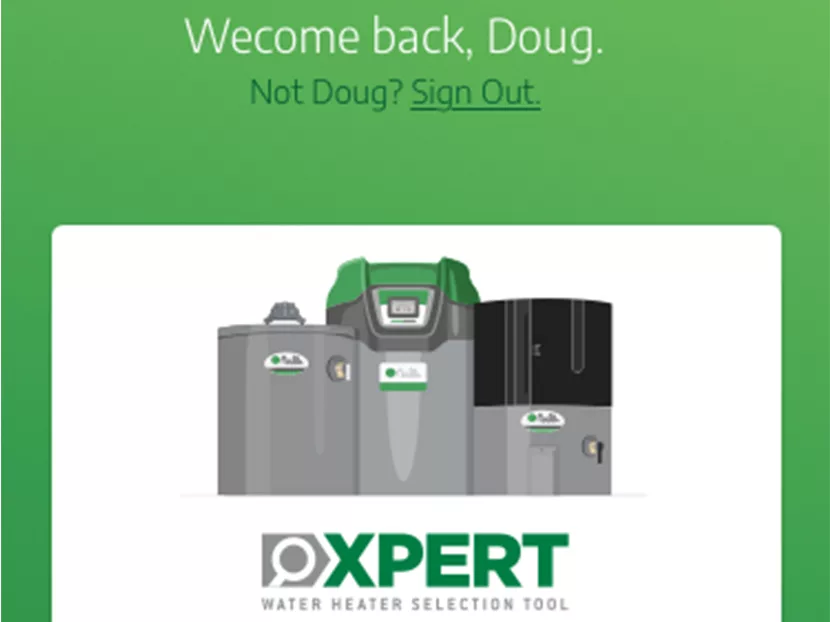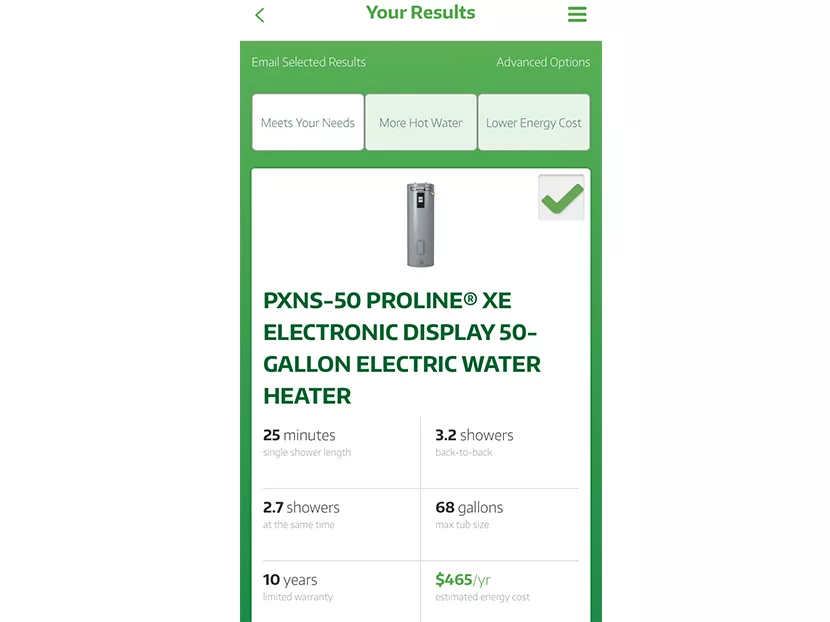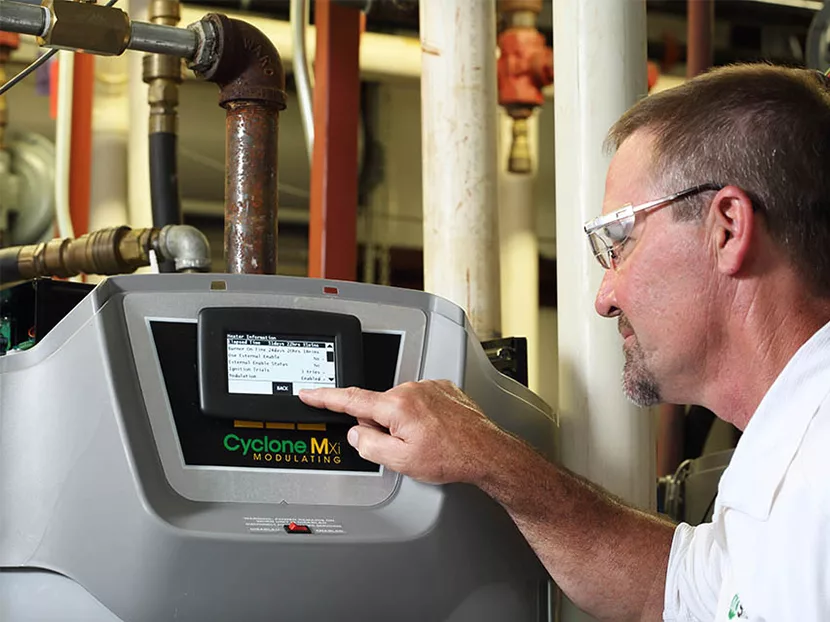Sometimes it takes years for a trend or technology to be truly transformative. For example, condensing water heating isn’t new — and tankless heating technology was first patented more than a century ago. Likewise, advanced user interfaces and connectivity have long been commonplace in consumer electronics, but now they’re being used in commercial water heating on a scale that could revolutionize this industry.
Increased adoption of condensing technology in commercial settings
Non-condensing technology in the 80 percent efficiency range was the de facto standard for decades. Condensing technology has been around for many years, but it has only recently reached nearly half of all gas units sold in the commercial space.
Its growth is mostly due to the payback. For commercial applications, it’s not uncommon to see a two- to three-year payback when a business switches from non-condensing to condensing water heating, especially when hot water is in high demand.
A full-service restaurant that uses 3,500 gallons of hot water daily, for example, could incur energy costs of $13,500 per year with non-condensing technology. That business can save about $2,000 each year just by making the switch to condensing technology — and that’s why its market share continues to rise.
Tankless technology comes of age in the commercial space
Tankless water heaters are a staple of residential applications. What’s new is the technology’s increasing popularity in commercial markets as well, particularly in fast food restaurants and light-duty commercial applications.
What started as residential tankless being used in commercial jobs has now evolved into specific commercial models, multi-unit rack systems and tankless heaters combined with hot water storage.
Tankless technology will continue to expand its role in the commercial market where facility owners prioritize space savings and redundancy.
More intuitive user interfaces and electronic controls
In commercial water heating, the days of fault codes and blinking lights are quickly becoming a thing of the past. Now, the user interface is usually in plain English and features helpful troubleshooting tips.
Many of today’s advanced displays show cycle counts and burner run time, which give facility managers and contractors a better understanding of the true health of the water heater and whether it’s sized properly.
Many controls feature modulation algorithms that sense when a water heater has either a heavy or light draw load. The unit can then be adjusted to fire at a percentage that matches demand.
Manufacturers are increasingly using electronic controls for proactive protection. For instance, A. O. Smith developed the first powered anode for commercial water heating. These titanium rods, which emit a low-level current into the water to enhance protection and increase service life, earned quick acceptance in the market. The anodes adjust over time to better protect the tank.
Innovations in remote connectivity
Much has changed since 2009, when our company was the first to offer remote connectivity in commercial water heating.
A recent IHS Markit study estimates that there are now 27 billion connected Internet-of-Things (IoT) devices worldwide. But according to Futurum Research, 32 percent of companies aren’t using IoT technology — and 54 percent are only “somewhat” using it.
Today’s water heater manufacturers must be more than IoT innovators. We must also educate our customers and contractors about how their businesses can benefit from enhanced connectivity.
App-based mobile technology is familiar enough thanks to the proliferation of smartphones, but it’s still a manufacturer’s job to make connectivity easy and practical in a commercial setting. That’s why A. O. Smith’s newest Cyclone Mxi models will now be built standard with iCOMM remote connectivity that’s accessible through a free app. We see subscription-based connectivity as a relic of the past. This new technology works with all iOS and Android smart devices and there’s no additional hardware required. The app also supports two-way communication to make it easy to adjust the set point or differential — for one unit or an entire fleet of water heaters.
The app uses a Wi-Fi connection that lets a remote user monitor water heater status in real time and respond quickly if there is a fault notification. It’s easy to access current or historical water heater data for a single unit or fleet — and to proactively manage fault alerts. This technology is helping one central Florida university manage water heaters at 12 student housing facilities from a single smartphone.
IoT for predictive maintenance
By harnessing the growing power of artificial intelligence and IoT, we’re on the threshold of a new era in equipment longevity. Sensors on the water heater can capture vast amounts of data that help predict when the unit’s life cycle is coming to an end. This enables a commercial customer to proactively plan for replacements rather than be blindsided by emergency failures.
IoT growing exponentially
Due to the advanced capabilities made possible by IoT, the IHS Markit study predicts that there will be an astonishing 125 billion connected IoT devices worldwide by 2030. Today’s water heater manufacturers and contractors need to stay ahead of the curve by helping their customers take full advantage of IoT savings and efficiency.









